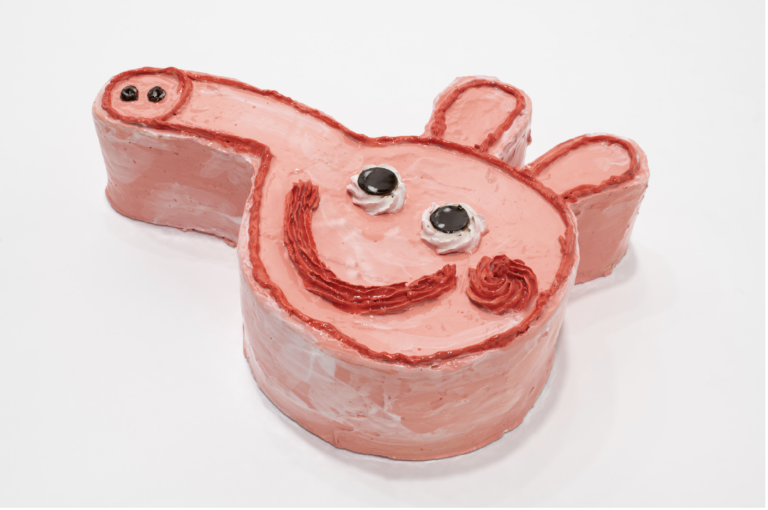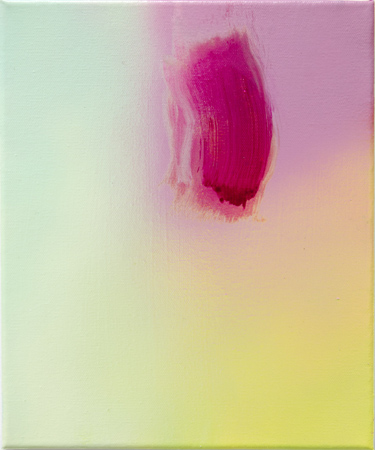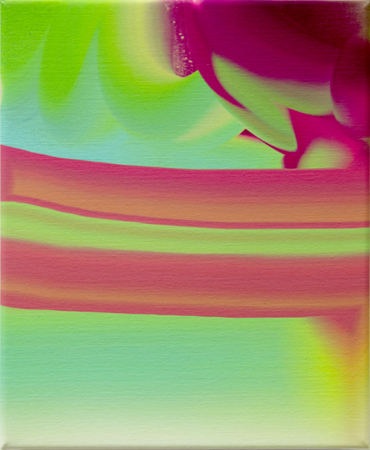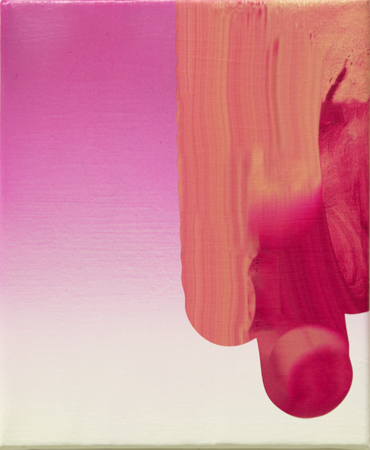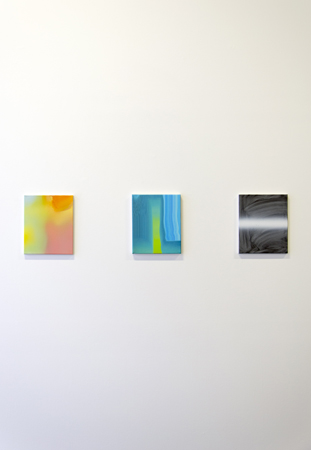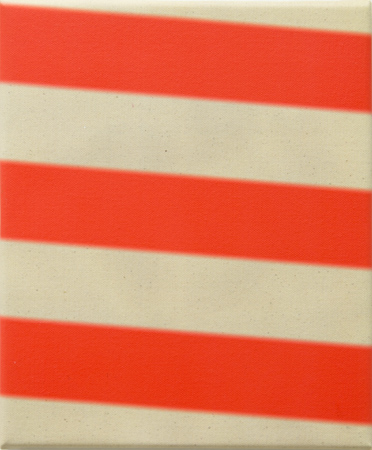
A painting conveys a history. It embeds within the layers of its making a trace of its own lineage. A pointer to things past and present. A painting is always slipping between modes and media, romanticism and spectacle. To paint is to actively negotiate and comment on the condition of the moment. Paintings, like smart objects, are inextricably linked to one another, they act as transitional modules within a larger network.
In ‘New Smart Objects’ painting embraces the digital as the underlying condition of our time- and yet it is not explicitly about the digital. Rather the digital functions as a contemporary status quo, and integral part of process and subject by default- through what writer Andre Rottman aptly describes as a ‘the surrounding ecology of media images’ . Thus, we are caught between versions of things. An object and its networked-self have no strict distinction in a world where the act of a one to one viewing is diminished. The characteristics of an image are no longer principally visual- they are embedded within the metadata of source, description, and properties.
The potency of painting is its potential to establish and record new ways of seeing. Thus the paintings in ‘New Smart Objects’ offer a new kind of representation- one that explores painting moving freely between states of digital representation and painted object. One that nakedly exhibits a set of layers, images, and objects and the transactions between them.


